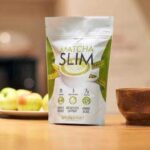The Keto Diet has gained popularity for its potential health benefits and weight loss effects. However, to effectively incorporate this dietary approach into one’s lifestyle, it’s essential to consider the price of the Keto Diet. In this essay, we will delve into the various factors that contribute to the cost of following the Keto Diet, including food choices, supplements, and potential savings.
I. Food Choices and Quality
1. Cost of High-Fat Foods
The Keto Diet emphasizes consuming high-quality fats such as avocados, olive oil, and grass-fed meats. These items tend to be more expensive than their lower-quality counterparts. The cost of incorporating these fats into daily meals can add up.
2. Protein Expenses
Moderate protein intake is a key component of the Keto Diet. Quality sources of protein, such as free-range chicken or wild-caught fish, can be pricier compared to conventionally farmed alternatives.
II. Vegetables and Low-Carb Options
1. Non-Starchy Vegetables
Non-starchy vegetables like leafy greens, broccoli, and cauliflower are staples in the Keto Diet. While these are generally affordable, the cost may increase if you prioritize organic or locally sourced produce.
2. Low-Carb Alternatives
Substituting traditional carbohydrate-rich foods with low-carb alternatives can be more expensive. For example, almond flour and coconut flour, commonly used in Keto baking, are often pricier than regular flour.
III. Ketone Supplements
Cost of Exogenous Ketones Some individuals on the Keto Diet choose to supplement with exogenous ketones to enhance ketosis or alleviate the “keto flu.” These supplements can be costly, potentially impacting the overall cost of following the diet.
IV. Specialized Keto Products
Keto-Friendly Snacks and Products The market for keto-friendly snacks and prepackaged foods has expanded rapidly. While these products offer convenience, they are often more expensive than preparing whole foods at home.
V. Potential Savings
1. Meal Planning and Bulk Purchasing
Costs can be managed by careful meal planning and buying items in bulk when possible. This approach can help reduce food waste and lower overall expenses.
2. Seasonal and Local Foods
Opting for seasonal and locally sourced foods may offer cost savings, as these items are often fresher and more affordable.
VI. Conclusion
The price of the Keto Diet can vary significantly based on individual preferences and dietary choices. While high-quality fats and protein sources may increase expenses, budget-friendly alternatives and smart shopping strategies can help manage costs. It’s important to recognize that the Keto Diet’s cost-effectiveness is influenced by factors such as location, access to affordable ingredients, and personal dietary choices.
Ultimately, the financial impact of the Keto Diet should be weighed against its potential health benefits and alignment with one’s lifestyle and budget. Careful planning and consideration of food choices can help individuals follow the Keto Diet while managing costs effectively.




